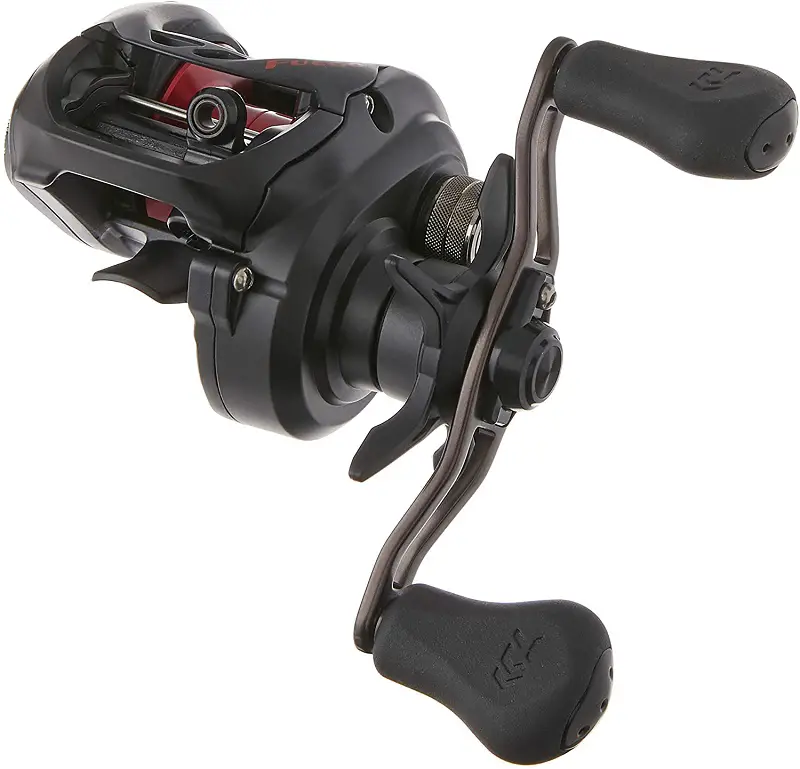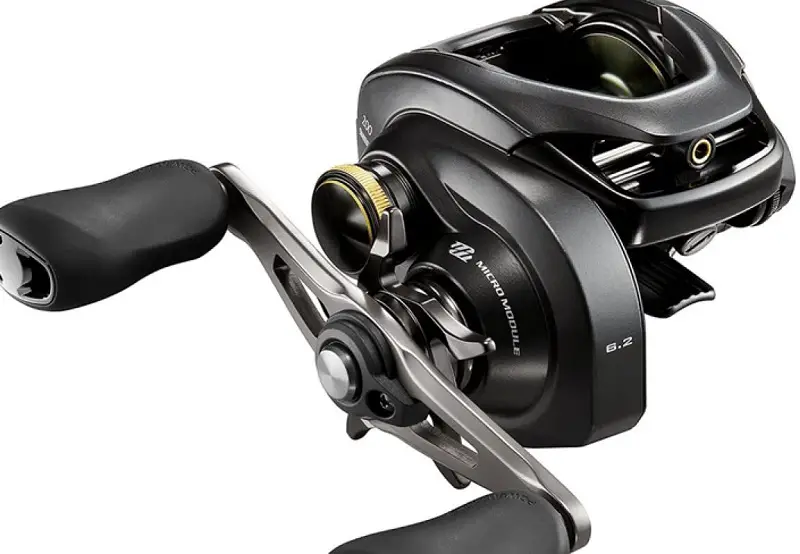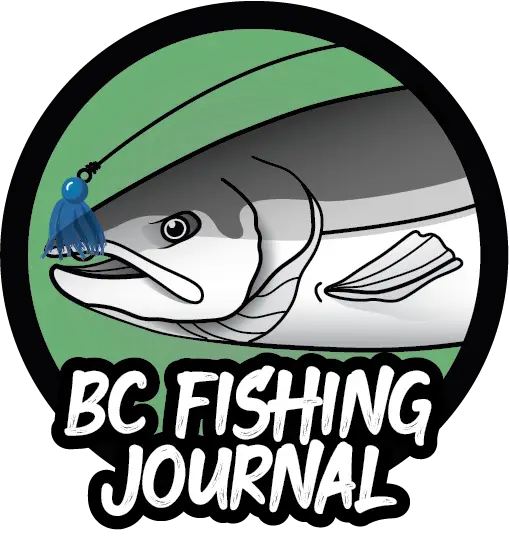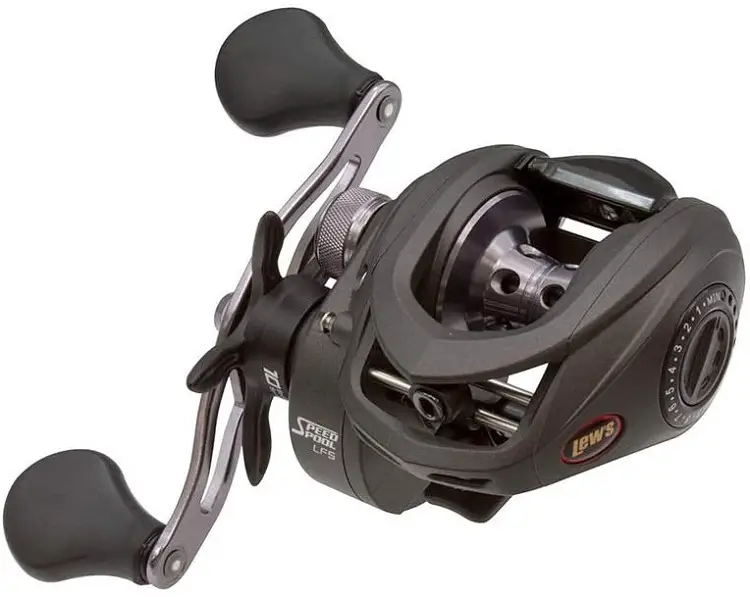
Tackle Guide: Best Baitcasting Reels for 2024
Baitcasting reels are my favorite fishing reels. They take a little more practice to master than a spinning reel but once you put your time in they’ll provide unique features to make you a better angler. In this guide, I want to outline those unique features, detail the key components in a great reel, differentiate between the several types of baitcasters (low profile vs. round profile) and recommend my favorite reels in each of these categories. If you already have a good understanding of these reels you may want to skip the initial educational details and jump to the reel reviews toward the bottom of the page.
The Best Baitcasting Reels for the Money
Reel
Price
Review
Round Profile Reels
Reel
Price
Review
Best Uses for Baitcasting Reels
Accurate casting
For casting precision, the baitcaster reels dominate this space. It accomplishes this by being able to slow or stop the spool with your thumb when casting. This gives the angler complete control of how much line is being released off the spool. For example, if you’re looking to cast or skip a lure/bait into a small section while trying to avoiding branches, logs, docks, etc. the baitcaster reel rises above the spinning reel.
Heavier Rods
Baitcasters are often paired with heavier backboned rods. The backbone of a rod is the section between the reel and first guide. As it sounds, the backbone provides most the strength for the rod. Baitcasters lend well to heavier backboned rods, so are often associated with targeting larger fishing species (or accommodating power fishing techniques).
River Fishing
I think one of the best pros for a baitcaster is its usages in river fishing (or moving water) applications, primarily with drift/float fishing setups. The baitcaster enables the line to slowly/quickly come off the spool in a controlled format. This is very important to get a “natural looking” bait when it’s drifting under a float in moving water. It’s much harder to release line smoothly on a spinning reel all the while controlling your rod and mending your line. This description doesn’t do it justice but I can’t stress this enough, baitcasters are invaluable for the river float fisherman.
Power Fishing vs. Finesse Fishing
Baitcasters fall into the power fishing category as they are designed to handle heavier lures/baits and handle more aggressive fishing techniques or actions on the water. An example of this type of fishing could include punching weighted lures through lily pads or thick forage, cranking or speed trolling. The spinning reel does better with smaller lures and “finesse fishing” techniques, which would include sensitivity and “feeling” the smallest and lightest fishing bites. This would include fishing techniques like drop-shotting, jigging, bobber fishing, etc. There are many camps with various definitions on what power and finesse fishing is, but in my opinion the baitcasting reel lends best to the power fishing category.
| Finesse Fishing | Middle Ground | Power Fishing |
| Still fishing | Bottom Bouncing | Trolling |
| Live / Dead bait | Texas Rigging | Casting |
| Bobber | Carolina Rigging | Cranking |
| Drop-Shotting | Flipping / Pitching | Speed Trolling |
| Jigging | Topwater | Float Fishing in moving water |
Differences between a Low Profile and Round Baitcasting Reels
Low profile baitcaster reels vs. the round baitcaster are very similar but the primary difference is the size. Low profile is the smaller, lighter reel and the round reel is larger and heavier. Low profile baitcasters are certainly the most popular for the typical fisherman. Here are some quick Pros / Cons for Low profile vs. Round Baitcasting reels.
| Specification / Component | Low Profile | Round Profile |
| Weight | Much smaller and lighter, so less casting fatigue and easier on the wrist-action. | Larger reels that are typically 50% heavier. Based on model sizes the difference can be significant. |
| Gear Ratio | Generally, have a higher gear ratio, because of the smaller spool size. | On average these reels have a 6.0:1 ratio. |
| Line Capacity | Less line capacity because of the smaller spool. | This is one of the biggest pros as these can hold much larger weight and yardage of line. This is important for fish taking long runs. |
| Drag | Low profile certainly holds their own for their size, but don’t have as good of a drag system as the round baitcaster. | Larger/more drag washers provide a higher rated drag system to handle bigger fish. |
| Targeted Fish Weights | Small to Medium sized fish (estimate between 0 – 14 lbs).
E.g. Bass, Trout, Pan fish, etc. |
Medium to Very Large fish (estimate >12 lbs).
Sturgeon, Musky, Halibut, Tuna, etc. |
What makes a great Baitcasting Reel
In this section, I’ll outline the key features (components) you should be looking for in quality baitcasting reel. Baitcasting components are similar to spinning reels; drag system, gear ratios, bearings, etc, but the baitcaster has larger variations of these components. For example, they have a higher gear ratio than the spinning reel. Lastly, based on this research and personal testing I’ll outline my best baitcasting reels for the year (both low profile and round reels).

Gear Ratio
The gear ratio quickly summed up is the speed of your reel. The ratio is represented by x:1, and the x represents how many times the spool rotates for each single crank of the handle. For example, a gear ratio of 6.2:1 means the spool will rotate 6.2 times for each handle crank. Depending on the type of fishing you’re doing a higher gear ratio is typically more advantageous. For example, when covering a bunch of water, you’ll want to do a lot of casting and that means quick retrieval to get your lure back to the boat and out for another cast. A higher gear ratio speeds this process up to ensure you’re getting the most line in for each crank of the handle.
Brake System
A great braking system is important with baitcasters as this will help prevent the brutal backlashes or “birds nest”. A backlash is when the spool over rotates after the lure has hit the water and these additional rotations cause the fishing line to bunch up on the reel. A good braking system will slow the spool down just before the end of the cast to ensure these additional rotations do not occur.
The first braking system component is a small knob on the side of the reel that controls the spool speed. The knob applies pressure to the spool so it spins either faster (loosen the knob) or slower (tighten the knob). The big idea here is for larger lures or setups have a slower spool spinning speed.
There are many different additional brake systems on these reels, like Centrifugal brakes (pins inside creating friction) and Magnetic brakes that slow the spool down with magnets both of which are adjustable. You don’t have to understand the technical details here but I will say it’s impressive to see manufacturers continually pushing the technology in this area of the reel.
Lastly, the best brake system on a baitcaster reel is your thumb. No matter what special braking system technology your reel has, your thumb will always be needed. You’ll have to learn how to apply the right amount of pressure on the line to slow down the spool as needed. This is something you’ll have to practice, and it doesn’t take long to get good at. It’s mandatory to learn to avoid backlashes and get those accurate casts.
Body / Frame
Baitcasters are all about lightweight reels and are typically made from aluminum or graphite. Aluminum has more grit but is heavier than the graphite, whereas the graphite is lighter but won’t hold up to a lot of abuse. Whichever balance you like in materials, I recommend looking for a one-piece frame made of a single material (best would be one-piece aluminum frame for the strength).
Spool
A great spool is lightweight for speed but can handle the elements as well. Typical material for spools is aluminum because it’s so light. A forged aluminum spool is best as it’s a tougher metal and doesn’t get damaged or scratched as easily. Manufacturers are drilling holes into their spools for that lighter weight and quicker spin (air dynamics & weight).
Ball Bearings
The bearing count is not necessarily important. You want to ensure you have quality ball bearings and recommend looking for shielded bearings or sealed bearings.
Line Guides
The material for line guides should be legit, I’m talking strong titanium. These are the guides where the line feeds off the spool and reel. They often move with the spool ensuring the line is guided on/off the spool without a big angle which creates some line friction.
There is an argument to be made on the shape of these guides to enable efficient line guidance off the reel. Daiwa uses their patented T-Wing System where the guide is shaped like a T, it creates a wide section (top part of the T) when line is exiting and a narrow (bottom part of the T) when the line is returning. Anyway, don’t get too hung up on the shape but make sure the guide is made from a quality/strong metal.
Handlers
This is a preference thing. And often you can swap these out with different handles, so you’re not committed to a specific handle in your reel purchase. For me, I prefer a larger plastic knob that’s sticks well to my hand. Anything that slips in my fingers in the rain drives me crazy.
Top Baitcasting Reels Reviews
Here are top 6 low profile reels and top 3 round baitcasting reels. I’ve chosen these reels based on the key features in parallel with price. As always, I’m looking for the balance of quality and affordability, “the best bang for your buck” as they say. These are quality reels and would be a great asset to your baitcasting arsenal. Here are my picks for the best baitcasting reels for this year.

This is a fitting example of a consistent quality reel across the board for a reasonable price. The lightweight (yet tough) aluminum body and side plate will hold up against a lot of abuse. The Tatula has an interesting rotor (side component that works in parallel with the spool) in which mimics the spool with holes drilled/cut out for a lighter and more air dynamic component. Daiwa’s fancy name for it Air Rotor system.
The line guide system is called the T-Wing System (TWS), which is essentially a guide that’s in the shape of a T which creates less angles (friction) of the line coming off the reel. This type of feature is important to me as it enables better casting and balanced line retrieval on the spool.
The stainless-steel ball bearings in the base model are average, but again in looking at the price point of this reel they’re certainly on par for me. The gear ratio for the models are all different 100P = 5.4:1, 100H = 6.3:1, 100HS = 7.3:1. For a baitcaster I always recommend a minimum of 6:0:1 gear ratio, so I’d certainly recommend the 100H or 100HS in this case.
Key Features
- T-Wing System
- Air Rotor System
- Very good Line retrieval (per handle crank)
- Carbon Drag washers
- Magnetic braking system
- 3 Models available
They have a two-way braking system that uses both Magnetic and Centrifugal components. This braking system is important in controlling the spool speed and cuts down the backlashes.
Lew’s claims an “aircraft-grade duralumin drive gear” which is essentially a hard & light alloy made of aluminum, copper & other elements. This of course is a part of the lighter design that Lew’s has strived and achieved with the Tournament MB.
This reel has many components that mimic some of the best baitcasters out there. The quality of the reel is impressive and the price point is very impressive for what you’re getting.
Key Features
- Very lightweight
- One-piece aluminum frame
- Multi-Setting Brake system (Magnetic & Centrifugal)
- Aircraft-grade duralumin drive gear
- Star Drag
- 4 Models available

The Black Max comes in only one model, aka. one size fits all. And they have created a solid single option with a one-piece graphite frame (I’m always a fan of the one-piece frame!). It has an aluminum spool, 5 ball bearings for a smooth retrieve and good gear ratio of 6.4:1.
The Power Disk drag system is one of the most impressive components with a drag rating of 18 lbs which is the highest for all these low-profile reels. So even though there is only a single model for this reel it will be able to handle larger fish.
I’d recommend this reel for any angler, as mentioned a first time baitcaster to even a secondary reel for the advanced angler. You can’t beat this price point with the components that Abu Garcia is offering!
Key Features
- Price point!
- Excellent drag rating of 18 lbs
- One-piece graphite body
- Good 6.4:1 gear ratio

Shimano does push the envelope in the materials / technologies they put into their reels. A fitting example is the body concept that Shimano calls Hagane, which is a fancy way of saying strong Japanese steel! This reel design concept is durable and light to put up with continual abuse!
The spool is made from thin aluminum uniform structure, it’s called the Shimano Stable Spool Design (S3D). This basically means they’ve created a very lightweight spool that can spin quickly and in a balanced format to avoid vibration. This is makes it easier to cast lightweight lures/baits.
All in all, I don’t mind spending the extra money for a baitcaster like this as it’s piece of mind especially when I’m spending so much time and energy preparing for big fishing trips. Rest assured this reel will consistently perform well for the casual to frequent angler.
Key Features
- Lasting / quality components
- Shimano Stable Spool Design (S3D)
- SVS Infinity brake system
- Saltwater approved
- 3 available models

This reel comes flying out of the gate with a Gear Ratio of 7.0:1! With that speed, you’ll retrieve your baits back fast and ultimately give you with more casts within the day.
Line capacity is certainly above average when comparing against other reels in this class (165 yards of 12 lb mono line). This can be helpful for those longer fish runs or even shorter trolling applications.
The fact that it can be used in Saltwater is a bonus and speaks to the quality of the construction. All in all, this is a great first baitcaster reel for someone just beginning, or secondary reel for the multi-reel angler!
Key Features
- Price point!
- High Gear Ratio of 7.0:1
- Dual braking system (magnetic & centrifugal)
- Large line capacity
- Saltwater approved

Weight at 7.3 oz. is consistent with the higher end reels, so it feels like you’re holding a higher end reel. The line capacity is a little lower (110 yards of 12 lb monofilament line) than the other reels but certainly not a not a deal breaker. The line retrieval is 26.8 inches per crank, which is certainly on the high end when comparing against the other reels in this/higher classes.
The remaining specs are on par with a good reel, starting with a gear ratio of 6.3:1, that’s legit! Aluminum spool, graphite body, carbon fiber drag, 14 ball bearings and magnetic brake system.
This is the lowest priced point reel on this guide and it’s hard not to want to try it out for a secondary reel, or perhaps someone looking to try a baitcaster for a first time.
Key Features
- Price point!
- Great line retrieval
- Dual braking system (magnetic & centrifugal)
Comparison Chart of the Low-Profile Baitcasting Reels
| Product | Gear Ratio | Ball Bearings | Drag Range (lbs) | Weight (ounces) | Line Retrieve (inches / crank) | Line Capacity | Braking System | Body / Structure | # of Models |
|---|---|---|---|---|---|---|---|---|---|
| Daiwa Tatula | 5.4:1 - 7.3:1 | 8 | 13.2 | 7.9 | 22.9 - 30.5 | MONO: 14/120, 16/100 BRAID: 40/140, 55/105 | Magforce Magnetic | Rotor = zaion carbon composite. Rugged, lightweight aluminum frame and side plate | 3 |
| Lew's Fishing Tournament MB | 5.6:1 - 8.3:1 | 10 | 14 | 6.7 | 23 - 35 | MONO: 120/12 - 150/12 | Multi-Setting Brake: Magnetic & 4-pin position | One-piece aluminum frame. Aircraft-grade Duralumin drive gear. Graphite sideplate. | 4 |
| Abu Garcia Black Max | 6.4:1 | 5 | 18 | 7.3 | 26 | MONO: 145/12 BRAID: 140/30 | Magnetic | One piece graphite frame, Graphite sideplates, Spool = Aluminum, drag is Synthetic. | 1 |
| Shimano Curado 200I | 5.5:1 - 7.2:1 | 6 | 12 | 7.4 | 23 - 30 | MONO: 8/180,10/155,14/110 BRAID: 30/190,50/120,65/80 | SVS Infinity brake system. | Metal Reel body (strong), 1 piece frame. | 3 |
| KastKing Royale Legend | 7.0:1 | 12 | 12 | 7.6 | N/A | MONO: 12/165 | Magnetic & centrifugal independent brake system. | Anodized aluminum forged multi-ported whiffle-style spool. | 1 |
| Piscifun | 6.3:1 | 14 | 12 | 7.3 | 26.8 | MONO: 12/110 BRAID: 30/135 | Magnetic | CNC Machined Aluminum Spool, Graphite Body. | 1 |

The brake technology of Shimano is impressive with they call VBS, which is a centrifugal style that uses weights to create drag on the spool. These brake weights can be turned on or off to control the speed of the spool. That may sound pretty technical but the point being this braking system will greatly reduce backlashes.
The Calcutta offers 6 models so there is a reel for the ultra-light to heavier gear applications. I’m a big fan of having multiple model options, as I’ll often buy a smaller or larger version of the same reel once I’ve put it to the test. I’ve pounded Calcutta’s on the rivers and I love them. These reels are long term investments to me as they’ll last a lifetime when properly taken care of.
Key Features
- High quality cold forge aluminum frame, sideplates and spool
- VBS Brake system to reduce backlashes
- Saltwater approved
- Long life cycle for this reel

The Carbon Matrix drag system is smooth and dependable. As mentioned, each year when I’ve taken the reel a part, I’m happy to see no deterioration of the carbon washers. The drag itself is set with a star wheel that is easily adjustable when fighting the fish, I can hold the reel handle and turn the drag wheel with the same hand at the same time.
The 6-pin centrifugal braking system is good, as it does take some practice to learn the best settings for spool speed and drag. As I always say, your best brake system is your thumb, and I depend more on that than the centrifugal system with this reel.
These Abu Garcia reels have been around for decades, and there’s good reason for that. If well maintained, these reels will provide a number of years of great performance.
Key Features
- Price point!
- Above average gear ratio at 6.3:1
- Carbon Matrix drag system
- Smooth action with 5 stainless steel ball bearing

The Daiwa Luna is frame and sideplates are made of solid bar stock aluminum providing maximum strength. This advanced aluminum shell is important to ensuring the reel is balanced by protecting the rest of the reel.
If you’re well acquainted with baitcaster reels and try the Luna, one of the first things you’ll notice is the ease and extra distance when casting. This is the free floating spool structure that removes the spool pinion from the gear train (reduced friction). This allows the spool to spin quicker and longer for those long bomb casts. Additionally, the casting speed is easily adjusted by pressing and turning the sideplate. Most reels will have a separate knob for this functionality; to me the sideplate adjustment is more intuitive.
Key Features
- Solid bar stock aluminum frame and sideplates
- Free-Floating Spool for those long bomb casts
- Ultra-smooth, multi-disc drag system
- Magforce Z braking system for reducing backlashes
- Saltwater approved
- Long life cycle for this reel
Comparison Chart of the Round Baitcasting Reels
| Product | Gear Ratio | Ball Bearings | Drag Range (lbs) | Weight (ounces) | Line Retrieve (inches / crank) | Body / Structure | # of Models |
|---|---|---|---|---|---|---|---|
| Shimano Calcutta B | 5.0:1 - 6.0:1 | 3 | 9.5 - 16.5 | 9 - 18.2 | 23 - 28 | Cold Forge Aluminum Frame, Sideplates, Spool. | 6 |
| Abu Garcia Ambassadeur Classic | 6.3:1 | 5 | 15 | 9.3 - 10.9 | 30 | Aluminum, Carbon Fiber Drag. | 5 |
| Daiwa TD Luna | 5.1:1 | 6 | 11 - 15.4 | 11.1 - 12.9 | 23.6 | Solid bar stock aluminum. | 2 |
Conclusion
I hope this guide was helpful for you to choosing a baitcasting reel and providing additional information on these reels. I love studying baitcasters and looking for new technologies and improvements. If there is a reel I didn’t include that you use and love, I’d love to hear from you. Additionally, I’m happy to take any questions/comments on this guide, for all these things please leave a comment below. Tight lines! Jesse
About the Author



I looking to get into steelhead and Salmon fishing and need to up grade my pole and reel, I’ve been going to Idaho and using my friends equipment but it’s time for my own, I’m on a tite budget, and was wondering if you had any suggestions thanks Brett.
Hey Brett, thanks for the note! I’m assuming you’re looking for a starter setup for fishing rivers for Steelhead/Salmon? That said, I’d recommend the Abu Garcia Ambassadeur reel I’ve recommended on this page. Typically for Steelhead/Salmon you’ll want a larger baitcaster for long drifts and big runs. The low profile baitcasters are better suited for Bass and smaller trout/salmon (so really depends on what you’re using it for). The Abu Garcia Ambassadeur is the lowest priced reel on this guide, with high quality components that will last many years (over the past 4 years I’ve used this reel in all my Salmon/Steelhead videos on YouTube).
As for a rod, again if you’re using it for rivers and drift fishing, you should definitely have something at least 10 feet long. I’d recommend a 10’6 Shimano Convergence. Bang for your buck it’s tough to find anything better IMO. Lastly, I’ve posted a TIP on my first Salmon Rod/Reel, I’d recommend checking that out for a few more pointers.
I hope this helps, let me know if you have any further questions.
Thank you for this article. I just purchased my first baitcaster but am questioning the size of the reel. I bought an Abu Garcia Ambasserdeur C4 5601. Is this reel too small? Should I got for the 6601?
Thanks.
Hey Steve, thanks for the comment and glad it helped, I love Abu Garcia reels! As for your question, you’re likely just fine with the 5601 model vs. 6601. The big difference is line capacity holding monofilament 240 yards of 12# (5601) vs. 320 yards of 12# (6601). What type of fishing are you looking to use this reel for? E.g. River drift fishing, Ocean fishing, etc. If you’re looking for a salt water reel the bigger reel capacity is more important, but if you’re drift fishing rivers the 5601 should be more than fine for those big runs. Let me know!